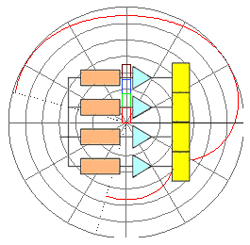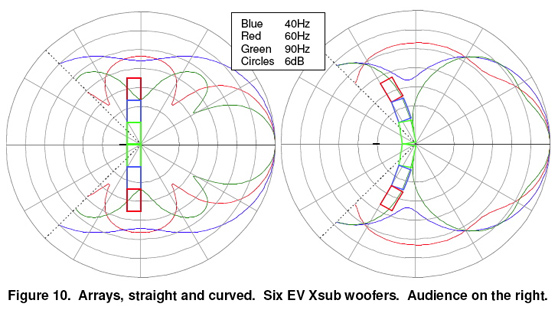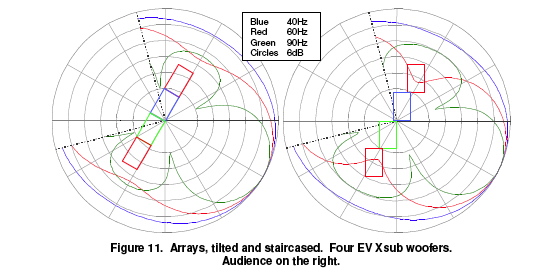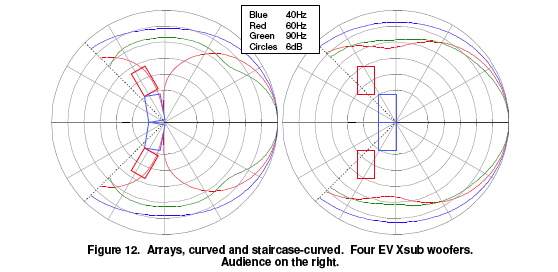
Figure 10 shows that straight arrays have patterns which become narrower and have more lobes with increasing frequency. Curved arrays, if long enough, have more constant directivity.
Figure 11 shows that staircasing is essentially equivalent to tilting. Staircasing can be useful when staging and/or appearance considerations prevent the use of tilted arrays.
Figure 12 shows that for pattern widening, staircasing can be used instead of curving. In this case, the staircased results are better.
Groundstacked Arrays
Pattern Width
For groundstacked horizontal arrays, width of coverage is often an issue. Straight-line subbass arrays wider than about 10 feet (3m) are too directional for most venues.

For example, the graphs in Figure 9 show that the coverage pattern of an array of four EV Xsub woofers (approximately 12 feet, or 3.7m wide) is only 90° wide at 60Hz. At higher frequencies, it would be even narrower.


An even more severe example is shown in the left-hand diagram of Figure 10, an array of six Xsub woofers.
Physical width of the array is approximately 24 feet (7.3m). This example shows that the pattern is only 60° wide at 60Hz, and highly frequency-dependent.
You can broaden and smooth the patterns by curving or staircasing the array (see Figure 12), or by using beamforming.
